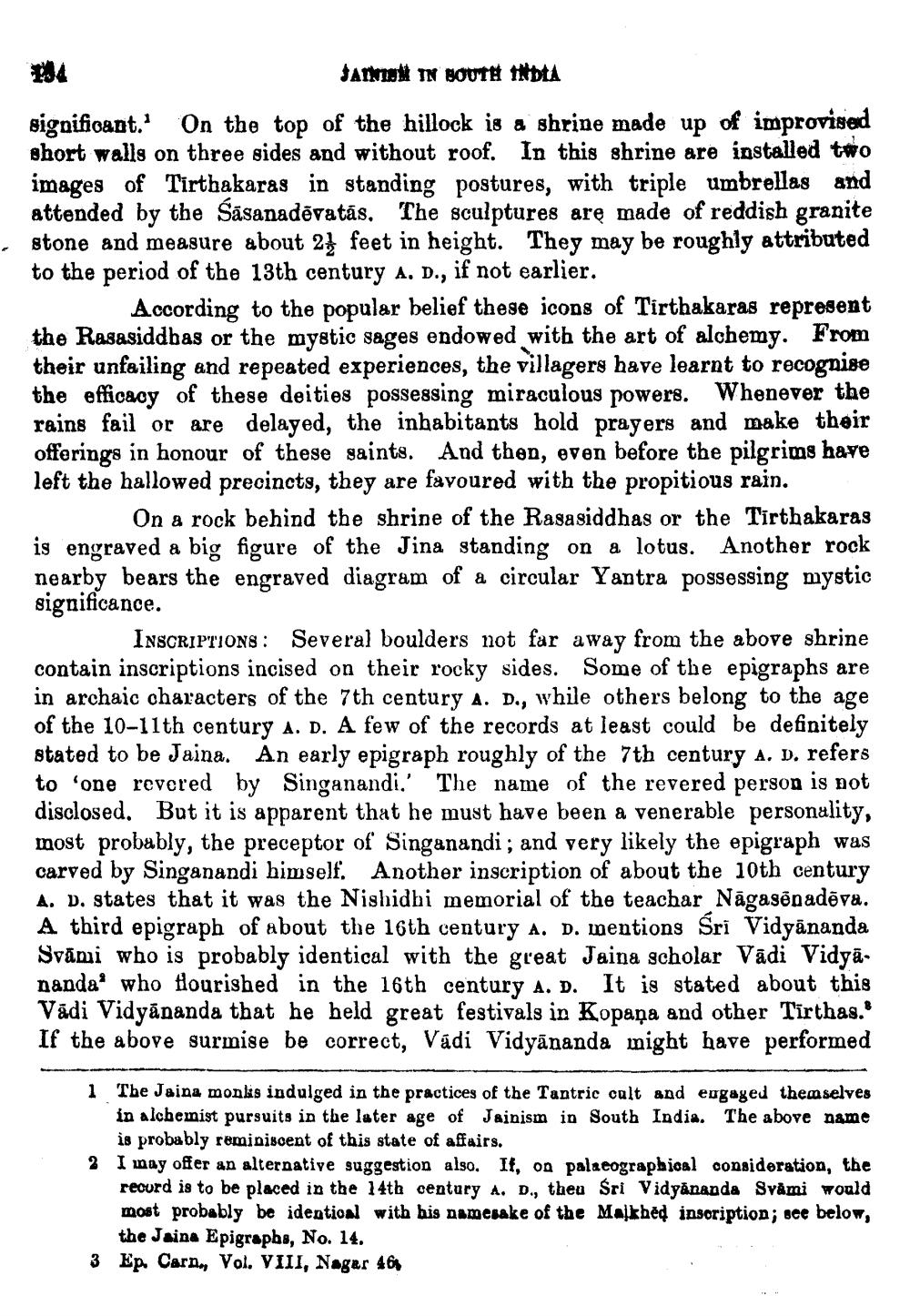________________
184
JAINISM IN SOUTH INDIA
significant. On the top of the hillock is a shrine made up of improvised short walls on three sides and without roof. In this shrine are installed two images of Tirthakaras in standing postures, with triple umbrellas and attended by the Sasanadevatās. The sculptures are made of reddish granite stone and measure about 2 feet in height. They may be roughly attributed to the period of the 13th century A. D., if not earlier.
According to the popular belief these icons of Tirthakaras represent the Rasasiddhas or the mystic sages endowed with the art of alchemy. From their unfailing and repeated experiences, the villagers have learnt to recognise the efficacy of these deities possessing miraculous powers. Whenever the rains fail or are delayed, the inhabitants hold prayers and make their offerings in honour of these saints. And then, even before the pilgrims have left the hallowed precincts, they are favoured with the propitious rain.
On a rock behind the shrine of the Rasasiddhas or the Tirthakaras is engraved a big figure of the Jina standing on a lotus. Another rock nearby bears the engraved diagram of a circular Yantra possessing mystic significance.
INSCRIPTIONS: Several boulders not far away from the above shrine contain inscriptions incised on their rocky sides. Some of the epigraphs are in archaic characters of the 7th century A. D., while others belong to the age of the 10-11th century A. D. A few of the records at least could be definitely stated to be Jaina. An early epigraph roughly of the 7th century A. D. refers to 'one revered by Singanandi.' The name of the revered person is not disclosed. But it is apparent that he must have been a venerable personality, most probably, the preceptor of Singanandi; and very likely the epigraph was carved by Singanandi himself. Another inscription of about the 10th century A. D. states that it was the Nishidhi memorial of the teachar Nagasenadeva. A third epigraph of about the 16th century A. D. mentions Sri Vidyananda Svami who is probably identical with the great Jaina scholar Vadi Vidyananda' who flourished in the 16th century A. D. It is stated about this Vadi Vidyananda that he held great festivals in Kopana and other Tirthas. If the above surmise be correct, Vadi Vidyananda might have performed
1 The Jaina monks indulged in the practices of the Tantric cult and engaged themselves in alchemist pursuits in the later age of Jainism in South India. The above name is probably reminiscent of this state of affairs.
2 I may offer an alternative suggestion also. If, on palaeographical consideration, the record is to be placed in the 14th century A. D., theu Sri Vidyananda Svami would most probably be identical with his namesake of the Malkhed inscription; see below, the Jaina Epigraphs, No. 14.
3 Ep. Carn, Vol. VIII, Nagar 46




